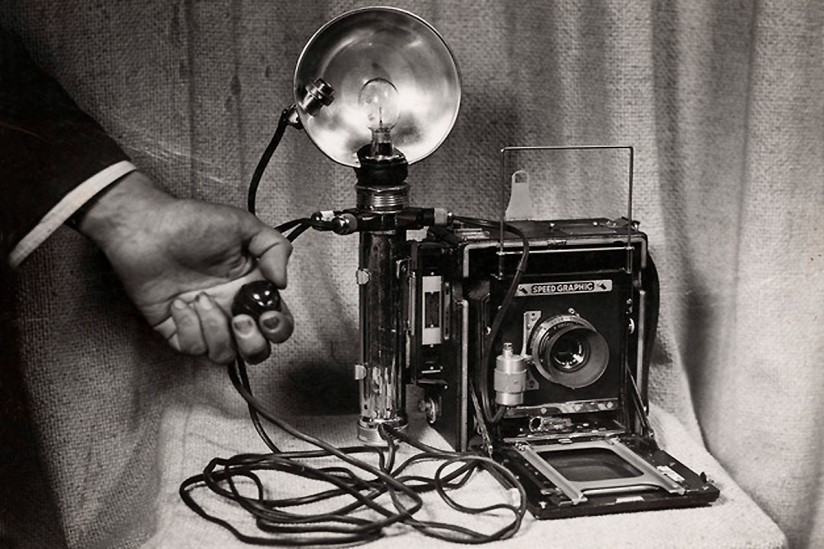Here’s A Brief Timeline Of The History Of Photography!
Photography has captivated us since its creation and continues to do so now. Uniquely, it makes things visible to us that otherwise would have remained hidden.
Beautiful wall art created by famous photographers like Man Ray and Edward Steichen has gone down in photographic history as masterpieces.
“The act of pointing could be compared to the art of photography.”
However, when was photography created? and by whom? Join us as we explore the evolution of photography, from the earliest uses of paper coated with silver chloride up to modern digital and video photography.
When Was Photography Invented?
The history of photography goes back deeper than you might think. Aristotle first explained the workings of the camera obscura, which projects an image via a tiny hole, in the fourth century BC. The world appears upside-down or reversed via a camera obscura’s pinhole.
The “camera obscura” is regarded as the original building block upon which all subsequent innovative breakthroughs and inventions in the field of photography were built, although our conception of the camera has undergone a significant evolution. It defines the timeline of known photographic history.
Who Started Photography?
Many people believe that Louis Daguerre and Joseph Nicéphore Niépce invented photography with cameras as we know it today. The former initially experimented with silver halide and chloride photography but was unable to determine how to stop them from darkening in the presence of light.
Niépce was successful in taking the first actual camera photograph in 1826. He used a bitumen-coated pewter sheet that needed to be exposed for at least 8 hours. Niépce’s view from his workroom in Saint-Loup-de-Varennes, France, served as the inspiration for this image. The Niépce Heliograph, which was created using a camera obscura, is regarded as the earliest known photograph in the history of photography.
Louis Jacques Mandé Daguerre, a painter, agreed to collaborate with Niépce because he was so inspired by this accomplishment. Daguerre used silver-plated copper sheets and mercury vapor to further develop, perfect, and experiment with the process. Daguerre was able to significantly cut the exposure time as he continued to refine this technique.
The daguerreotype, which only required just a few seconds of exposure, made commercial portrait photography possible in 1839. This period in the history of photography has proven to be important, considerably influencing both the success of the medium and the adoption of cameras by the general public.
William Henry Fox Talbot invented the calotype method only a few years later. For the first time, photographers were able to produce a negative from which many prints could be produced.
The collodion wet plate technique, which created a negative picture on a clear glass plate, was first established in 1851 by Frederick Scott Archer. The collodion technique was used for tintype portraits and in the printing industry well into the 1900s, despite being overtaken by the gelatin dry plate process in the late 1800s.
Photography Then And Now: Selfies And “Sex Sells”
Nowadays, we consider the camera to be an artistic tool, much like the painter’s brush. Yet, painting was the most popular medium in the art world before photography emerged as a unique art form. Early in the 1900s, photographers were seen as an inferior competition by artists.
Originally, painters would create people’s portraits, but as photography became more popular, they began to worry about their livelihood. Interestingly, artists soon started to use the camera and photography in their work.
American lamp-maker and photography enthusiast Robert Cornelius used the daguerreotype technique to capture the first-ever “selfie” in 1839. Photographers with a business mindset rapidly understood the advantages of easily reprintable photos.
In the 1850s, Alexis Gouin and Bruno Braquehais created the predecessors of the traditional pin-up shot with their erotic nude images. Because “sex sells” was as accurate then as it is now, it shouldn’t be surprising that they did well in sales.
Although few photographers today can tread the fine line between tastefully artistic erotic photographs and gratuity, nude photography still makes up a sizable portion of many portfolios.
The History Of Photography Timeline
- 4th Century BC
Aristotle defines the camera obscura
- 1826
Joseph Nicéphore Nièpce takes the first preserved camera snapshot
- 1839
Daguerre and Niépce present the daguerreotype.
- 1841
William Henry Fox Talbot develops the negative-positive process
- 1851
Frederick Scott Archer presents the collodion process.
- 1889
George Eastman introduces the film strip (Kodak)
- 1925
Leica releases the first small-format camera with 35mm film
- 1936
The design of colour film (Kodak: Kodachrome, Agfa: Agfacolor)
- 1948
The first Polaroid camera delivers instant photos using a rapid development process
- 1956
The first aperture priority camera storms the market (Agfa Automatic 66)
- 1963
Canon introduces the first camera with autofocus
- 1974
Rollei makes the first fully-automatic camera
End of the 1900s
The transition from analogue to digital photography
RECOMMENDED: 5 African Kingdoms and Empires Everyone Should Learn About

